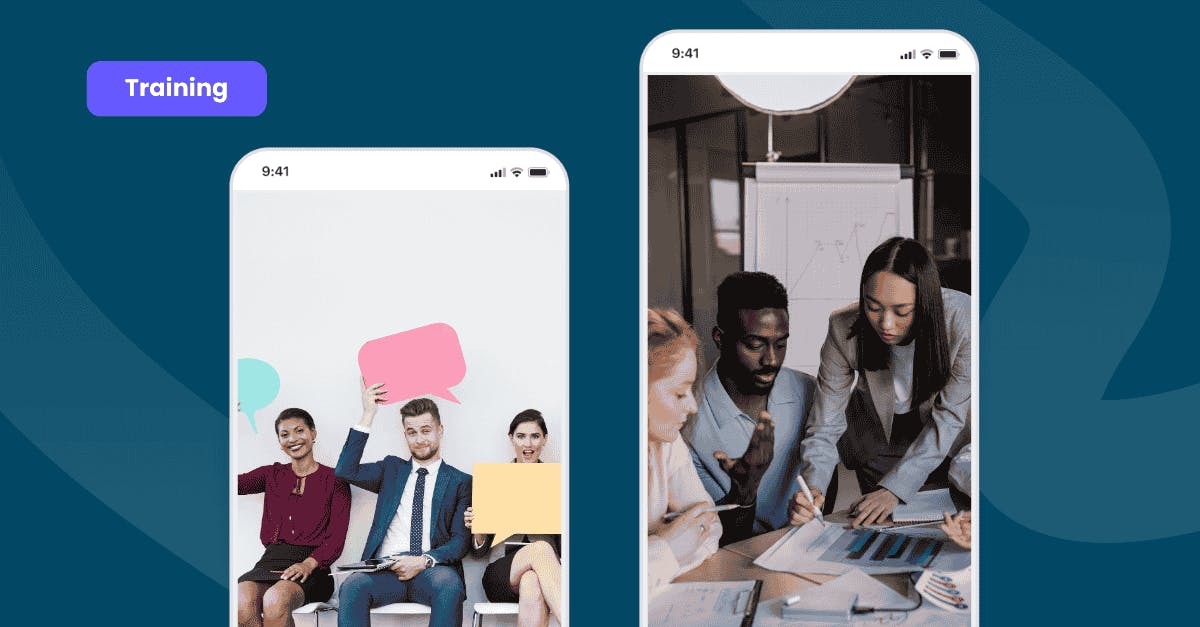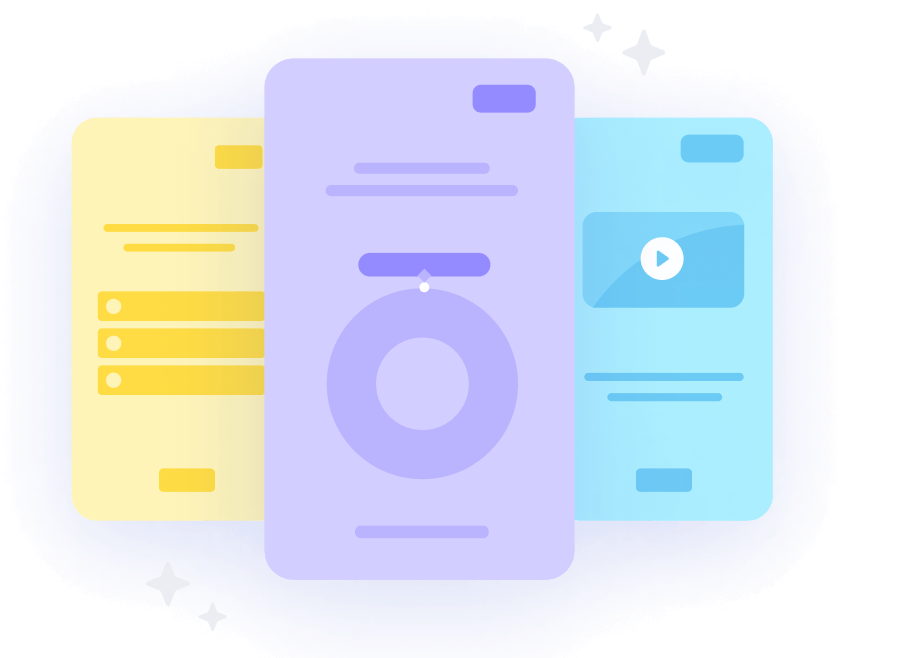10 examples of SMART learning objectives

If you’re a leader, goals need to be set not only for yourself but also for your team members. Sometimes, it can be difficult to know where to start when setting these SMART goals for professional development.
That’s why we’ve compiled a list of examples of SMART learning objectives, so you can clearly and concisely formulate your goals for success.
How do you write a smart learning objective?
To write a SMART learning objective, it should be Specific, Measurable, Achievable, Relevant, and Time-bound. Start by clearly defining the specific skill or knowledge you want to acquire, then make sure it's measurable by specifying how you’ll assess your progress or achievement.
Make it achievable by setting a realistic goal that can be accomplished. You should also guarantee its relevance to your overall goals and the context in which you’re learning.
Lastly, set a specific time frame for when you aim to achieve this goal to give you a sense of urgency and focus on your learning efforts.
SC Training (formerly EdApp) also has courses that are helpful for enhancing your overall learning experience. Check out the Future of Learning and the Learn and Apply leadership courses to know more!
1. Increase course completion rates (Learning & Development)
Let’s say you want to develop a training course for your employees. This course can be taken by new hires, interns, contractual workers, or long-term employees. But, how do you check that your learners have completed their training? With completion rates, of course. This example of objectives and goals shows how many of your learners successfully finish a course they’re enrolled in. But what are SMART objectives examples? Here’s an example of SMART learning objectives for reaching certain completion rates on your courses through SMART goal setting:
- Specific: Increase course completion rates by 80%.
- Measurable: In a four-part course, learners should be able to complete at least 3-4 lessons.
- Achievable: Make lessons easy to complete in around 5-10 minutes.
- Relevant: Focus on a particular skill that needs to be developed among the team the most.
- Time-bound: Achieve the goal in two months.
If you don’t have a company training software for blended training yet, then consider using SC Training (formerly EdApp). On this platform, you can create courses, conduct instructor-led training, track progress, and more. This training app is filled with features that encourage learners to engage with their learning more often, such as quizzes, interactive lesson slides, and games.
Check out SC Training for free and start improving your course completion rates!
2. Improve service times (Food Service Management)
This example of SMART learning objectives is for those working in the food service management industry. Let’s say you want to improve kitchen performance, such as food quality and preparation speed. To achieve that, you can set a goal to have food served within 25 minutes of receiving the orders, and then set out SMART learning objectives to guide you and your staff:
- Specific: Improve service times to be within 20 minutes.
- Measurable: Feedback forms and service tickets should reflect fast and positive service experiences.
- Achievable: Make service lines organized.
- Relevant: Faster service can lead to higher customer satisfaction rates and more returning customers.
- Time-bound: Performance should be improved within five weeks.
Assess your employees’ skills on the job, check attendance, and track their training progress using SC Training's Practical Assessments and Group Training features. With these tools, you can say goodbye to paper checklists or spreadsheets and say hello to digital dashboards and graphs.
3. Run tests biweekly (Software Development)
Working in software development isn’t easy. There are always deadlines to meet and tests to conduct. It’s important to have SMART Learning Objectives so that your software development and management can run smoothly. Let’s say this time around you and your team decides to use the Agile methodology to develop your software. Together, you came up with these objectives:
- Specific: Run tests every two weeks and have a quality passing rate of 90% for your software at each iteration.
- Measurable: Measure this against previous tests and other relevant metrics.
- Achievable: Reach your goal with the help of your best practices and other tried and true methods.
- Relevant: It can increase feedback opportunities, reduce risks, support rapid development, and promote collaboration with Agile.
- Time-bound: Each iteration lasts two weeks.
Agile is used in project management and in learning & development, but it really sees its use in software development. Apply Agile to your processes and get your software to the state that it needs to be in no time.
4. Increase shares by 10% (Market Share)
Let’s say you want to test some tactics to increase the market share of your company to achieve more sustainable growth. Using the SMART method, SMART education, and some measurable goals sample, you can easily come up with the outcome objective examples and measurable goals necessary to do just that:
- Specific: Decide on the product lines and regions with which you’ll work to increase your market share by 10%.
- Measurable: Keep up your development on a regular basis based on the number of new clients and expansion in both old and new markets.
- Achievable: Your market share increased by 8% last year. Therefore, 10% should be doable.
- Relevant: It’s a worthwhile goal that’s crucial to your company’s success in the future.
- Time-bound: Set a one-year deadline for this objective.
5. Bring in additional accounts (Sales)
If you’re working as a B2B salesperson, you’re always looking for new customers as part of your business goal or example of an objective. For example, you want to pull in 10 new accounts over the next six months as part of your business objectives. This is how you do effective SMART goal setting through an example of a SMART goal for work:
- Specific: Bring in 10 new accounts to your business
- Measurable: Calculate the number of presentations, pitches, and warm leads you need to make this happen.
- Achievable: At the same time last year, you brought in nine clients. Your business, network, and audience have expanded since then.
- Relevant: Management and the rest of your sales team can contribute in a relevant and significant way to the company as a whole.
- Time-bound: Monitor your progress every two weeks and make necessary adjustments to your budget, workforce, and continuity plans. Within six months, the SMART learning objective should be accomplished.
6. Boost customer satisfaction rate (Customer Support)
Working in customer support, you should always strive to keep customers informed and satisfied by solving their problems and concerns as soon as possible. By setting a SMART goal measurable example for professionals and individual objectives examples for your customer support team, you can continue to keep customers happy while using your product or service. Here is an example of SMART learning objectives in customer support:
- Specific: Achieve a customer satisfaction rate of 90%.
- Measurable: Past recorded calls, emails, and live interactions can better inform you of your customers’ feelings and problems regarding your product or service.
- Achievable: You reached a customer satisfaction rate of 85% last quarter. It’s reasonable to expect a rate of 90% for the next quarter.
- Relevant: Satisfied customers are customers that will continue to use your product or service, and your customer support teams will think that their role in your company is significant.
- Time-bound: Improved satisfaction rates should be reached by the end of the quarter.
7. Increase SEO traffic (Digital Marketing)
For the modern marketer, digital marketing and social media marketing are becoming more significant sources of traffic for businesses. A good SEO company can help you improve your website's ranking in search engines, which can lead to more traffic and leads. Let’s say your company wants to drastically increase search engine optimization (SEO) traffic and high-quality, relevant backlinks over the next six months. This goal is quantifiable and can be formulated in a SMART goal list:
- Specific: Increase your SEO traffic by 10%.
- Measurable: Use analytics tools like Google Analytics or Ahrefs.
- Achievable: Market research shows that a 10% increase is possible and increased organic traffic can lead to more leads.
- Relevant: This goal is relevant to your wider business goals.
- Time-bound: The additional traffic should be generated within six months.
8. Get certified (Individual Performance)
Sometimes we should set goals for ourselves to improve our own skills and also for achieving performance. In this case, you want to finish a certificate course in one month which is doable and realistic. Writing down your learning goals outline in SMART language can help you better visualize your plan of action:
- Specific: Finish a self-paced certificate course in one month.
- Measurable: Base your learning speed on previous learning experiences.
- Achievable: You previously finished another course in 90 days at a leisurely pace, so it’s reasonable to believe that you can finish courses even faster if you put in more time and effort.
- Relevant: Investing in oneself is always a good thing. It can lead to career growth and other types of opportunities.
- Time-bound: Give yourself a firm deadline of one month.
9. Increase attendance for events (HR Services)
For instance, you want to increase the number of employees attending company events and team-building sessions. So, you’d want at least 50 employees to show up at the next employee Christmas party. Here is one way you can word your objectives in SMART terms and start your goal setting process:
- Specific: Have 50 employees come and enjoy this year’s Christmas Party.
- Measurable: Send out forms to your employees to gauge interest in your event.
- Achievable: With your growing business and team, it’s reasonable to expect that at least 50 people can come this year.
- Relevant: Having events is important for company culture and employee satisfaction.
- Time-bound: Planning should last for one month.
10. Protect company systems (IT services)
The last example of SMART learning objectives is for the IT services industry. For example, you want to make sure your company’s systems and tools are secure from cyber attacks or threats. While employees can take cyber security courses to become more aware of the methods they can take to protect themselves, your IT services department can take this further. Here’s a way to present your objectives using the SMART technique:
- Specific: Update cyber security measures of gadgets and systems in four weeks.
- Measurable: Track each gadget and system in your company’s database.
- Achievable: Four weeks is a very doable deadline.
- Relevant: Protecting your company’s data, information, and other important files safe from phishing or hacking is relevant to running a business.
- Time-bound: This goal should be accomplished in four weeks.
Subscribe to our blog newsletter
Author
Darcy Dario
Darcy is a learning expert at SC Training (formerly EdApp), a mobile-based training platform that helps businesses bring their training solutions to the next level with democratized learning. She has a background in content writing and specializes in eLearning and global communications. When she’s not writing SEO-optimized content, she’s trying to finish her video game backlog.
